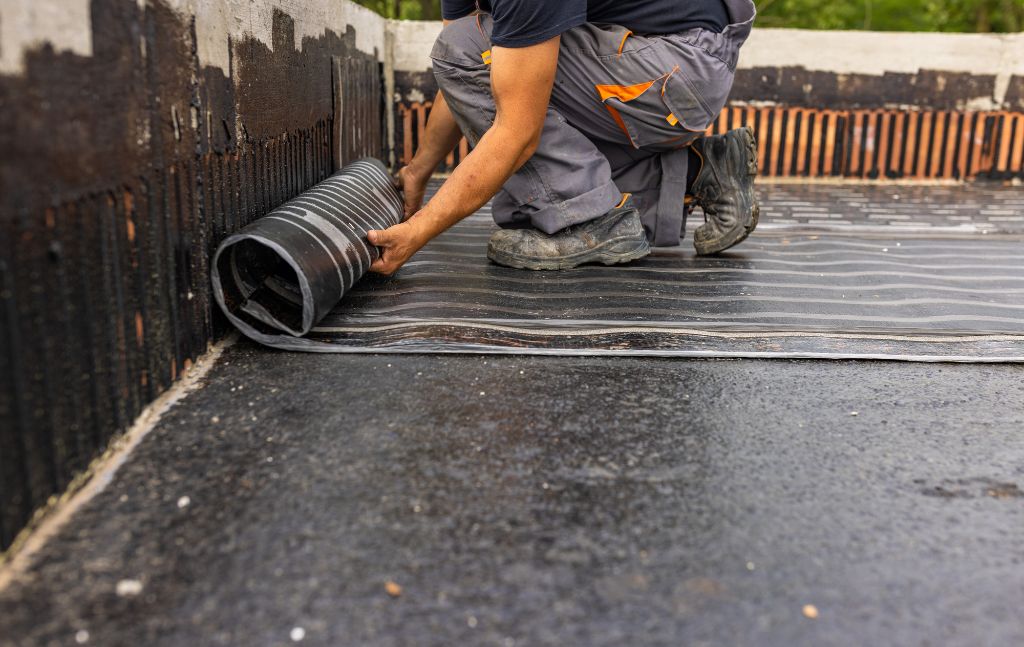Flat roofs are a popular choice for many modern and contemporary homes. They offer a unique aesthetic and functional advantages such as additional outdoor living space. However, the choice of roofing materials for your flat roof can significantly impact its durability, maintenance requirements, environmental impact, cost effectiveness and overall performance.
Our article today highlights the importance of understanding the different flat roof materials to ensure you make the right choice for your home.
Built-Up Roofing (BUR)
Built-Up Roofing, or BUR, is one of the oldest and most traditional methods for flat roofing. It is composed of multiple layers of bitumen (asphalt) and reinforcing fabrics called roofing felts. These layers are built up to create a finished membrane. BUR is prized for its proven track record of durability and resistance to foot traffic. However, it can be heavy and requires a robust structural support system.
Modified Bitumen Roofing
Another type of the modern built-up roofing system is the modified bitumen roofing, which was derived from the BUR technology. This is the polymer-modified bitumen put on the surface of a roof in the form of sheets that are rolled out. It has more flexible characteristics from the design and therefore considered more durable when compared to the traditional BUR and recommended for such homes located in areas with high temperature fluctuations. Thus, it could be installed otherwise such as in using cold adhesives, torch applied or self-adhesive sheets and thus availing quite a few other opportunities in its installation. Its reflective properties can also contribute to reduced cooling costs.
EPDM (Ethylene Propylene Diene Monomer)
The material known as EPDM came from ethylene propylene diene monomer rubber. It provides strong resistance against all kinds of temperatures and UV rays. It is also very sturdy and provides the ability of recycling, which makes it popular amongst users. Since EPDM roofs are easy to repair, install and maintain, EPDM systems can easily be dubbed as money saving options for a house owner. Finally, their black color may contribute to higher cooling costs unless it is coated with a reflective material.
TPO (Thermoplastic Polyolefin) and PVC (Polyvinyl Chloride)
TPO and PVC roofing materials are lightweight, highly reflective, and resistant to UV light, chemicals, and punctures. These single-ply membranes are welded together at the seams to create a watertight bond. They are particularly popular for their energy efficiency, as their white surface reflects sunlight, reducing cooling costs.
Choosing the Right Material
The choice of material for your flat roof should consider factors such as climate, energy efficiency requirements, budget, and aesthetic preferences. Each material offers a unique set of benefits and limitations. Consulting with a professional roofing contractor like RH Renovation NYC can provide personalized advice based on your specific needs and local building codes.



